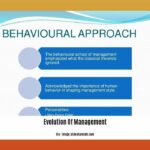Erik Erikson’s eight stages of psychosocial development offer a compelling framework for understanding the lifelong journey of human growth, highlighting the interplay between personal experiences and social interactions. Successfully navigating each stage equips individuals with essential life skills, fostering resilience, strong relationships, and a fulfilling sense of self. Conversely, unresolved conflicts can significantly impact well-being. While influential, Erikson’s theory isn’t without its critics; understanding its limitations enhances comprehension of human development. This comprehensive guide explores each stage, offering insights into its challenges and implications, along with a downloadable PDF [https://www.lolaapp.com/ericksons-stages-of-development-pdf] for further reference.
A Lifetime of Challenges and Triumphs: Understanding Erikson’s Stages
Erik Erikson’s theory isn’t a rigid set of rules, but a helpful roadmap for navigating life’s emotional landscape. Each stage presents a unique psychosocial crisis, a turning point where we grapple with significant questions about ourselves and our place in the world. Successfully resolving these crises fosters positive personality traits; struggling with them may lead to long-term challenges. This guide delves into each stage, providing insights and real-life examples. Remember that the age ranges are approximate, and individual experiences vary considerably.
Stage 1: Trust vs. Mistrust (Infancy: 0-18 Months)
This foundational stage centers on developing trust in caregivers and the world. Consistent care, reliable feeding, and a comforting presence foster a sense of security and hope. Inconsistency or neglect, however, can lead to mistrust, anxiety, and fear, potentially impacting future relationships. The ability to trust forms the basis for all subsequent stages. A child who consistently experiences love and security is more likely to develop a sense of hopefulness and optimism about the world.
Stage 2: Autonomy vs. Shame and Doubt (Toddlerhood: 18 Months-3 Years)
Toddlers assert their independence, striving for autonomy in activities like walking, talking, and self-feeding. Encouraging this self-reliance fosters self-confidence and willpower. Conversely, excessive control or criticism can engender shame and self-doubt, hindering the development of self-sufficiency. Potty training often serves as a microcosm of this conflict; success inspires independence, while failure can lead to feelings of inadequacy.
Stage 3: Initiative vs. Guilt (Preschool: 3-5 Years)
Preschoolers explore their surroundings with boundless energy and imagination. Supporting their initiative—encouraging play, curiosity, and exploration—nurtures purpose and leadership. However, constant criticism or punishment can instill guilt, inhibiting their willingness to take risks and explore. The balance between guiding a child’s adventurous spirit and setting appropriate boundaries is crucial during this phase.
Stage 4: Industry vs. Inferiority (School Age: 6-11 Years)
School introduces new challenges and social comparisons. Mastery of academic and social tasks builds competence and self-esteem, fostering a sense of industry. Consistent failure or feeling inadequate compared to peers, can create feelings of inferiority, potentially impacting future self-confidence. Success in school and extra-curricular activities contributes significantly to a sense of accomplishment during this stage.
Stage 5: Identity vs. Role Confusion (Adolescence: 12-18 Years)
Adolescents grapple with forming a strong sense of self and identity. Experimentation with values, beliefs, and roles is integral to this process. Supportive relationships and opportunities for exploration foster a cohesive identity and fidelity (loyalty and commitment). Lack of support or excessive pressure may lead to confusion, uncertainty, and an identity crisis, potentially affecting many aspects of adult life.
Stage 6: Intimacy vs. Isolation (Young Adulthood: 19-40 Years)
Young adulthood emphasizes the formation of deep and meaningful relationships—romantic partnerships, close friendships, and strong family bonds. Successfully building healthy relationships fosters intimacy, love, and connection. Struggling to form close bonds, however, can result in feelings of isolation and loneliness, profoundly affecting emotional and personal development.
Stage 7: Generativity vs. Stagnation (Middle Adulthood: 40-65 Years) [https://www.lolaapp.com/what-is-the-7th-stage-of-eriksons-theory]
During middle adulthood, the focus shifts toward contributing to the larger world—raising a family, building a career, and engaging in community service. This sense of giving back fosters generativity, leading to fulfillment and accomplishment. Failure to find meaningful contributions might lead to stagnation, marked by self-absorption and feelings of unfulfillment.
Stage 8: Ego Integrity vs. Despair (Maturity: 65+ Years)
In later life, reflection on past experiences and accomplishments becomes central. A sense of fulfillment, acceptance, and wisdom cultivates ego integrity. Conversely, those burdened with regrets and unfulfilled desires may experience despair and bitterness. This final stage focuses on achieving a sense of wholeness and acceptance of one’s life journey.
Erikson vs. Freud: A Comparative Perspective
Both Erikson and Sigmund Freud explored developmental stages, but Erikson’s theory offered a wider perspective. While Freud focused on psychosexual development, Erikson expanded the scope to encompass the entire lifespan and the significant influence of social and cultural factors [https://www.lolaapp.com/what-was-erik-eriksons-theory]. This broader approach arguably provides a more comprehensive view of human development.
Areas for Further Study & Criticisms
While influential, Erikson’s theory faces ongoing scrutiny. Some researchers question the universality of the stages across diverse cultures, suggesting a Western-centric bias. Others argue for a less stage-like model, recognizing the significant variability in individual experiences. Further research is needed to investigate these issues and refine our understanding of human development. Some experts believe the theory might better serve as a heuristic than a predictive model.
Putting Erikson’s Theory to Use
Erikson’s insights have widespread applications in many fields, including education, therapy, and organizational development. Understanding this framework provides tools for self-improvement, strengthening relationships, and fostering a deeper understanding of the human experience. Download the accompanying PDF [https://www.lolaapp.com/ericksons-stages-of-development-pdf] for a more detailed exploration of each stage. This simplified overview serves as a starting point for your own continued exploration of this influential theory. Remember, this is a guide, not a rigid template; individual experiences and cultural influences play a significant role in shaping our personal journeys.
- Mastering Leader in Spanish: The Complete Guide - April 19, 2025
- Uncovering Surprising Parallels: England Size Compared to US States - April 19, 2025
- Old Mexico Map: Border Shifts 1821-1857 - April 19, 2025
















